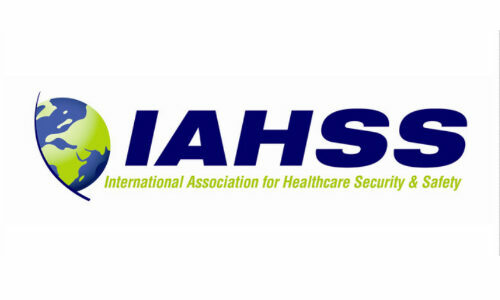The International Association for Healthcare Safety and Security (IAHSS) released its latest guideline on threat management March 7.
The guideline establishes a framework for healthcare organizations to proactively identify and manage threats of violence.
“I think these guidelines will help inform folks on where they should be in terms of having a threat management program in place,” says Tom Smith, the chair of the IAHSS Council on Guidelines.
The IAHSS Council developed the framework with input from the American Hospitals Association and the American Nurses Association along with the industry surveys and workshops it always relies on for guidelines.
Smith says the result of that collaboration is an important document for healthcare officials to use. In fact, he referred to establishing a threat management program as “one of the least expensive and effective steps an organization can take to reduce the likelihood of violence.”
Establishing Your Threat Management System
IAHSS officials don’t think hospitals will have to make any major changes to align with the threat management guideline.
“The topic has gotten so much press that leadership is already focusing on it,” Smith says. “They’re all already working on this because these incidents are so prevalent.”
Still, the IAHSS guidelines provide a helpful roadmap to improve existing programs as well as establish new ones.
According to the guidelines, healthcare organizations creating threat management programs should assign staff members with the following ten responsibilities:
- Staff education that promotes reporting and the real time communication of threats including an anonymous/confidential means of doing so
- Assessing formal or informal reports of behaviors of concern
- Implementing timely response plans
- Addressing reported incidents or threats in collaboration with internal and external responders and potentially affected parties
- Alerting healthcare facility staff and others who are at risk to include those who come onto campus as well as notifying other hospitals/health systems in the area as to the threat, as dictated by the situation
- Creating and monitoring safety plans related to the threat
- After-action debriefing sessions to review, evaluate and revise, as needed, the actions taken to mitigate the threat
- Victim advocacy, support and counseling as necessary
- Regularly reviewing trends in threat management events
- Routinely reporting program status and recommended changes to the healthcare facility’s leadership
Staff Training
Smith emphasizes the need to make it simple for employees to recognize and report relevant incidents or threats. But as simple as the process of reporting may be, training will still play a major role in the program’s success. The guidelines advise hospitals to have training programs for “prevention, recognition, response and reporting of threats, acts of aggression and other behaviors of concern.”
“I think every hospital, at this point, has identified the staff members that need training,” Smith says. “There’s required training based on the CMS and Joint Commission standards, and it’s no secret that people who work in the emergency departments, trauma settings and behavioral health departments need training.”
IAHSS’ threat management guidelines listed the following areas training programs should address:
- Early awareness and identification of persons displaying behaviors of concern
- Reporting protocols
- Activating an emergency response
- Documenting threats and incidents
- Emphasizing that all threats should be taken seriously
- Learning and sharing key takeaways from historical events
Smith also encourages officials to ensure that every violent incident on campus gets reported to a central source at an institution rather than a system where the security department handles some things and employee health and safety departments handle others.
The Threat Management Team
Aside from the training section, the bulk of the guidelines outline the nature and functions of a facility’s multidisciplinary threat management team.
The guidelines stipulate the team may include representatives from:
- Human Resources/Administration
- Legal / Risk Management
- Security
- Mental Health/Behavioral Specialist
- Clinical Services/Nursing
- Leadership from the area impacted by the threat
- Other departments as circumstances require (e.g. Social Services, Public Relations)
- Local/regional law enforcement as needed
The team will be responsible for receiving, validating, interpreting, responding to and managing threats. Procedures supporting those functions should be established.
The procedures should detail the following:
- Identifying threats
- Determining the seriousness and severity of the threat
- Developing intervention plans that protect potential victims and addressing the problem or conflict that precipitated the threat
- Providing training for the threat management team and other personnel as necessary regarding violence policies, procedures, industry standards and guidelines. Training should include regularly scheduled drills to ensure competencies are retained
- Documenting the threat assessment process allowing for confidentiality and in accordance with privacy requirements
- Conducting and participating in an after-action review / debrief process
Using the Threat Management Guideline
Smith says the threat management guideline was intentionally broad so that it complements existing IAHSS guidelines like Violence in Healthcare (1.09), Targeted Violence (1.09.1) and Management of Weapons (1.09.2).
Overall, Smith believes the guideline will help institutions more clearly spell out each feature of their threat management program.
“Each organization needs to review this and see how it applies to them,” Smith says. “Many organizations already have unofficial threat management teams, but I think formalizing the process will help them with efficiency and evaluation.”
The complete version of the Threat Management guideline is available to the public for a limited time here.













